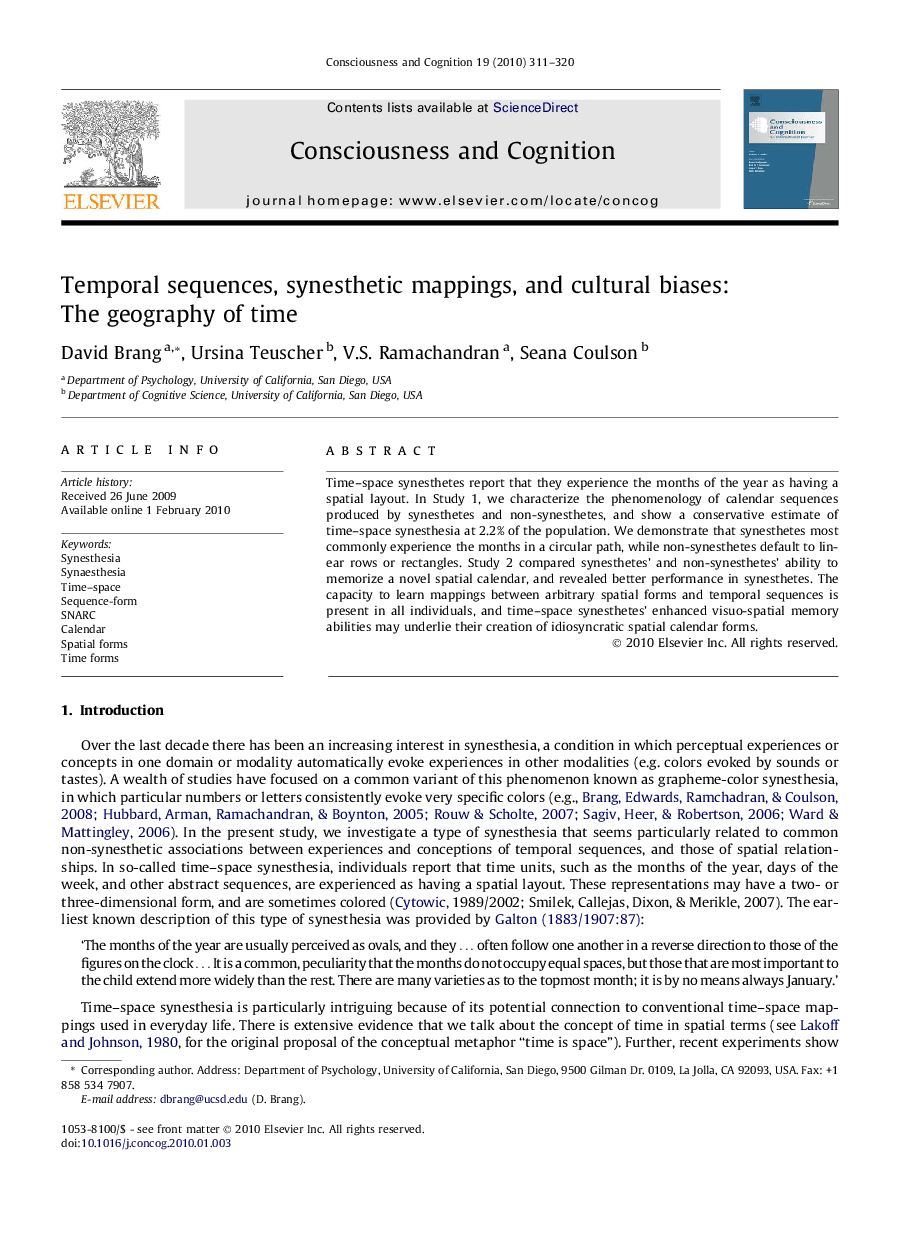| Article ID | Journal | Published Year | Pages | File Type |
|---|---|---|---|---|
| 10458780 | Consciousness and Cognition | 2010 | 10 Pages |
Abstract
Time-space synesthetes report that they experience the months of the year as having a spatial layout. In Study 1, we characterize the phenomenology of calendar sequences produced by synesthetes and non-synesthetes, and show a conservative estimate of time-space synesthesia at 2.2% of the population. We demonstrate that synesthetes most commonly experience the months in a circular path, while non-synesthetes default to linear rows or rectangles. Study 2 compared synesthetes' and non-synesthetes' ability to memorize a novel spatial calendar, and revealed better performance in synesthetes. The capacity to learn mappings between arbitrary spatial forms and temporal sequences is present in all individuals, and time-space synesthetes' enhanced visuo-spatial memory abilities may underlie their creation of idiosyncratic spatial calendar forms.
Related Topics
Life Sciences
Neuroscience
Cognitive Neuroscience
Authors
David Brang, Ursina Teuscher, V.S. Ramachandran, Seana Coulson,
